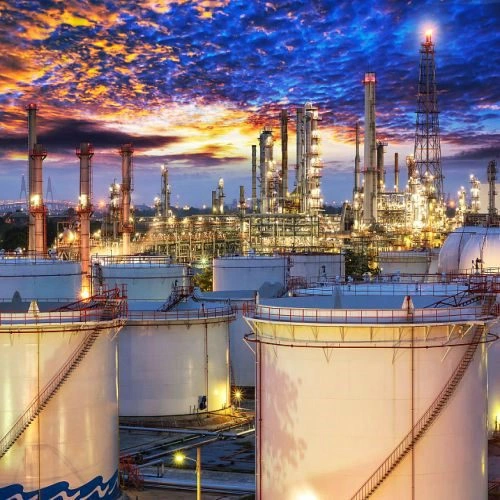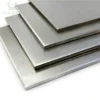To begin, it’s important to understand the significance of stainless steel in modern manufacturing and construction. Stainless steel is a type of steel that contains at least 10.5% chromium, which gives it its unique properties. It is highly resistant to corrosion, making it ideal for use in harsh environments such as chemical processing plants, food processing facilities, and marine applications.
As a result, stainless steel suppliers have become an important part of many industries, including the manufacturing and construction sectors. There are many different types of stainless steel available, each with its own unique properties and applications. However, 304 stainless steel is one of the most commonly used and versatile types of stainless steel.
In fact, 304 stainless steel accounts for over 50% of all stainless steel produced globally. 304 stainless steel’s popularity is due in part to its excellent corrosion resistance, high strength, and ease of fabrication. 304 stainless steel is often used in food processing equipment, chemical processing plants, and architectural applications such as roofing and cladding.
In the next sections of this article, we will delve deeper into the properties and applications of 304 stainless steel plate, as well as the manufacturing processes and market trends. By the end of this article, you will have a comprehensive understanding of this important material and how to choose the right 304 stainless steel material and stainless steel suppliers for your application.
Properties Of 304 Stainless Steel Plate
304 stainless steel plate has a unique set of properties that make it an ideal material for a variety of applications. As mentioned earlier, 304 stainless steel plate is highly resistant to corrosion and has excellent strength and weldability. In addition to these properties, 304 stainless steel plate also has a number of other characteristics that make it a popular choice among manufacturers and construction professionals.
NON-MAGNETIC
Firstly, 304 stainless steel is non-magnetic, which is important in applications where magnetic interference is a concern. This property also makes 304 stainless steel plate easier to distinguish from other types of steel. Secondly, 304 stainless steel is highly ductile, which means it can be formed into a variety of shapes without cracking or breaking. This makes 304 stainless steel plate an ideal material for complex fabrication projects.
CORROSION RESISTANCE
The chemical composition of 304 stainless steel is also noteworthy. 304 stainless steel plate contains 18% chromium and 8% nickel, which gives it its excellent corrosion resistance. 304 stainless steel plate also contains a small amount of carbon, which improves its strength and hardness. The combination of these elements gives 304 stainless steel its unique properties.
VERSATILITY AND COST-EFFECTIVENESS
Compared to other types of stainless steel, 304 stainless steel stands out for its versatility and cost-effectiveness. 304 stainless steel plate is less expensive than many other grades of stainless steel, which makes it a popular choice among manufacturers and construction professionals. Its availability is also widespread, thanks in part to the many stainless steel suppliers that stock and distribute this material.
ACID AND ALKALI RESISTANCE
304 stainless steel plate can withstand exposure to acidic and alkaline substances. So 304 stainless steel plate is used in a variety of industries. In the food processing industry, 304 stainless steel plate is used to make equipment such as storage tanks, processing machinery, and piping systems. In the chemical processing industry, 304 stainless steel plate is used to make equipment such as storage tanks, reaction vessels, and heat exchangers. In the construction industry, 304 stainless steel plate is used to make roofing and cladding panels, as well as structural components such as beams and columns.
In conclusion, 304 stainless steel plate is a versatile and cost-effective material that is widely used in various industries. Its unique set of properties, availability, and affordability make it a popular choice among manufacturers and construction professionals. If you are looking for a material that is strong, corrosion-resistant, and easy to work with, 304 stainless steel plate is an excellent option to consider.
Applications Of 304 Stainless Steel Plate
304 stainless steel plate is widely used in various industries and applications due to its exceptional corrosion resistance, high strength, and excellent formability. Some of the industries that rely heavily on 304 stainless steel plate include food processing, chemical and petrochemical, architecture and construction, and transportation.
PROCESSING INDUSTRY
In the food processing industry, 304 stainless steel plate is commonly used for equipment and utensils due to its non-reactive properties and resistance to corrosion caused by food and cleaning chemicals. 304 stainless steel plate is also used in food storage tanks, piping, and other components.
CHEMICAL AND PETROCHEMICAL INDUSTRIES
The chemical and petrochemical industries rely on 304 stainless steel plate for its ability to withstand harsh chemicals and high temperatures. 304 stainless steel plate is used in tanks, vessels, and piping for the storage and transport of corrosive chemicals and petrochemicals.
ARCHITECTURE AND CONSTRUCTION
In architecture and construction, 304 stainless steel plate is used in various applications, including roofing, wall panels, handrails, and structural support. Its aesthetic appeal and durability make 304 stainless steel plate a popular choice for both commercial and residential buildings.
ARCHITECTURE AND CONSTRUCTION
In architecture and construction, 304 stainless steel plate is used in various applications, including roofing, wall panels, handrails, and structural support. Its aesthetic appeal and durability make 304 stainless steel plate a popular choice for both commercial and residential buildings.

FAQ
When it comes to stainless steel, 304 stainless steel is one of the most widely used grades, and for good reason. Compared to other stainless steel grades, 304 stainless steel plate offers a range of advantages that make it an excellent choice for many applications.
One of the key advantages of 304 stainless steel is its corrosion resistance. 304 stainless steel plate contains a minimum of 18% chromium and 8% nickel, which gives it superior resistance to corrosion in a wide range of environments, including in acidic or caustic conditions. This makes it ideal for use in industries such as food processing, chemical processing, and marine applications, where exposure to corrosive substances is common.
Another advantage of 304 stainless steel is its strength and durability. 304 stainless steel plate has a high tensile strength and can withstand high temperatures without losing its mechanical properties. This makes it ideal for use in high-stress applications, such as in construction, transportation, and aerospace industries.
304 stainless steel also offers good weldability, making 304 stainless steel plate easy to fabricate and work with. 304 stainless steel plate can be welded using all standard welding techniques, including gas tungsten arc welding (GTAW), gas metal arc welding (GMAW), and shielded metal arc welding (SMAW).
In addition, 304 stainless steel is widely available and cost-effective, making it a popular choice for many applications. It is readily available from stainless steel suppliers around the world, and its price is competitive with other stainless steel grades.
Compared to other stainless steel grades, such as 316 and 430, 304 stainless steel offers a good balance of properties. While 316 stainless steel has even higher corrosion resistance, it is more expensive and not always necessary for many applications. On the other hand, 430 stainless steel is less expensive but has lower corrosion resistance and not suitable for harsh environments.
In conclusion, the advantages of using 304 stainless steel include excellent corrosion resistance, high strength and durability, good weldability, availability and cost-effectiveness. These properties make it a versatile and popular choice for many industries, from food processing and chemical processing to construction and transportation.
While 304 stainless steel is a versatile and widely used material, it does have certain limitations in specific environments and applications.
One of the main limitations of 304 stainless steel is its susceptibility to chloride-induced stress corrosion cracking (SCC). This is especially true in environments with high concentrations of chlorides, such as coastal areas or chemical processing plants. In these environments, it is often recommended to use a more corrosion-resistant grade of stainless steel, such as 316 or 904L.
Another limitation of 304 stainless steel is its relatively low resistance to pitting corrosion, which can occur in environments with high concentrations of halides or acidic solutions. This can result in localized corrosion and can compromise the integrity of the material. In such cases, 304L, 316, or duplex stainless steels may be better suited.
In high-temperature applications above 800°F (427°C), 304 stainless steel may experience thermal cracking or embrittlement, which can reduce its strength and durability. In these cases, heat-resistant alloys such as Inconel or Hastelloy may be more suitable.
Additionally, 304 stainless steel may not be ideal for use in some highly acidic or alkaline environments, as it may experience corrosion or degradation. In these cases, materials such as titanium, zirconium, or nickel-based alloys may be more appropriate.
It is important to note that the limitations of 304 stainless steel can be addressed through proper material selection, design, and maintenance. Working with experienced stainless steel suppliers and consulting with material experts can help identify the appropriate grade and treatment of stainless steel for a specific application.
Proper maintenance of 304 stainless steel is also essential to mitigate potential limitations. Regular cleaning, inspection, and repair of any damage or corrosion can help extend the lifespan and performance of the material. Additionally, avoiding exposure to high chloride environments, acidic or alkaline solutions, and high-temperature applications can help reduce the risk of corrosion or failure.
304 stainless steel is widely used in various industries due to its excellent corrosion resistance, high strength, and good weldability. Welding is one of the most common methods used to join two or more pieces of 304 stainless steel. However, welding can also introduce defects and weaken the material if not performed correctly. Therefore, it is essential to understand the welding process and best practices for ensuring strong and reliable welds.
The most common welding processes used for 304 stainless steel are TIG (Tungsten Inert Gas) welding and MIG (Metal Inert Gas) welding. TIG welding is the preferred method for welding 304 stainless steel because it produces high-quality, precise welds that require minimal post-weld cleanup. MIG welding is also a viable option for welding 304 stainless steel, but it produces a larger bead and requires more post-weld cleanup.
To ensure strong and reliable welds, several best practices should be followed. First, the welding equipment and materials should be of high quality and properly maintained. This includes using a high-quality TIG or MIG welder, high-purity welding gas, and clean filler wire.
Second, the welder should follow proper pre-weld and post-weld procedures. Before welding, the surfaces to be welded should be cleaned thoroughly and free of any contaminants, such as oil, grease, or dirt. After welding, the weld should be cleaned and passivated to remove any potential sources of corrosion.
Third, the welder should pay close attention to the welding parameters, such as the welding speed, heat input, and shielding gas flow rate. Welding too fast or too slow, using too much heat, or using an inadequate shielding gas flow can all lead to defects in the weld and weaken the material.
Finally, the welder should use proper welding techniques, such as maintaining a consistent arc length and controlling the travel speed, to produce a high-quality weld that is free of defects.
In conclusion, welding 304 stainless steel requires proper equipment, materials, procedures, and techniques to ensure strong and reliable welds. TIG welding is the preferred method for welding 304 stainless steel due to its high-quality, precise welds, and minimal post-weld cleanup. By following best practices and paying close attention to the welding parameters, welders can produce high-quality welds that meet the stringent requirements of various industries that rely on 304 stainless steel. If you still have questions, professional stainless steel suppliers HXSCO always welcome your consultation!
304 stainless steel is widely used in various industries due to its excellent corrosion resistance and durability. However, like all metals, it is susceptible to surface contamination and oxidation, which can compromise its properties and reduce its service life. Here are some ways to prevent surface contamination or oxidation on 304 stainless steel surfaces:
Proper cleaning and maintenance: Regular cleaning with mild detergents and water is essential to remove surface contaminants and prevent oxidation. Avoid using abrasive cleaners, steel wool, or harsh chemicals, as they can scratch or damage the surface. Also, keep the surface dry and avoid prolonged exposure to moisture.
Passivation: Passivation is a chemical process that removes free iron and other contaminants from the surface of stainless steel, creating a passive oxide layer that enhances corrosion resistance. Passivation can be performed by immersing the stainless steel in a solution of nitric acid or citric acid. This process should be performed by qualified professionals and in compliance with relevant regulations.
Protective coatings: Applying a protective coating on the surface of 304 stainless steel can prevent oxidation and surface contamination. Common coatings include acrylics, epoxies, and urethanes. The type of coating used depends on the specific application and environmental conditions.
Controlled environments: In certain applications, such as food processing, pharmaceuticals, or semiconductor manufacturing, a controlled environment is necessary to prevent surface contamination and oxidation. A cleanroom or controlled environment can be designed with proper filtration, air flow, and temperature and humidity control to maintain a clean and controlled environment.
Proper handling and storage: Proper handling and storage are critical to prevent surface contamination or oxidation. Stainless steel should be handled with clean gloves or tools and stored in a clean and dry environment. Avoid stacking or piling stainless steel, as it can scratch or damage the surface.
In conclusion, preventing surface contamination or oxidation on 304 stainless steel surfaces requires proper cleaning, passivation, protective coatings, controlled environments, and proper handling and storage. By following these practices, the properties and durability of 304 stainless steel can be maintained, ensuring long-term performance and reliability. When purchasing 304 stainless steel from stainless steel suppliers, it is important to discuss these preventive measures and ensure that the material is delivered in a clean and well-protected condition.
Stainless steel is a widely used material in many industries due to its exceptional properties, including corrosion resistance, durability, and versatility. Among the different grades of stainless steel, 304 stainless steel is the most commonly used due to its excellent corrosion resistance, high strength, and ease of fabrication. In this article, we will discuss the global production and consumption trends for 304 stainless steel and the factors driving growth in the industry.
According to recent market research reports, the global production of stainless steel is expected to reach over 55 million tons by 2026, with 304 stainless steel accounting for a significant share of the production. The increasing demand for stainless steel from various end-use industries, including construction, automotive, aerospace, and food processing, is driving the growth of the industry. The construction industry is the largest end-user of stainless steel, with the increasing demand for high-quality building materials and infrastructure projects driving the growth of the industry. In addition, the growing demand for stainless steel in the automotive and aerospace industries for lightweight and durable components is further driving the growth of the industry.
The Asia-Pacific region is the largest producer and consumer of stainless steel, with China being the largest producer and consumer of stainless steel in the world. The increasing demand for stainless steel in the region is attributed to the growing industrialization and urbanization in developing countries such as China, India, and Southeast Asia. The Middle East and Africa region is also witnessing significant growth in the production and consumption of stainless steel, driven by the increasing demand for infrastructure projects and industrial applications.
The key factors driving the growth of the 304 stainless steel market include the increasing demand for corrosion-resistant materials in various industries, the growing popularity of stainless steel in architecture and construction, and the rising demand for stainless steel in the food processing industry. The increasing focus on sustainable and eco-friendly materials in various industries is also driving the growth of the industry, as stainless steel is a recyclable and environmentally friendly material.
In conclusion, the global production and consumption of 304 stainless steel are witnessing significant growth, driven by the increasing demand from various end-use industries and the growing popularity of stainless steel as a versatile and sustainable material. The Asia-Pacific region is expected to remain the largest producer and consumer of stainless steel in the world, while the Middle East and Africa region are also witnessing significant growth in the industry. The key factors driving the growth of the 304 stainless steel industry include the increasing demand for corrosion-resistant materials, the growing popularity of stainless steel in construction and architecture, and the rising demand for stainless steel in the food processing industry.




